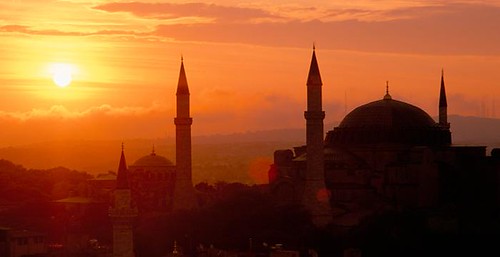Via Flickr:
Turkey is an intriguing country with a unique identity straddling both Europe and Asia. In a place where familiarity merges with the exotic, we find a magical blend of the ancient, Christian and Ottoman worlds where the jewel in the crown is the incredible city of Istanbul.
A city of great diversity, Istanbul is a combination of tree-lined boulevards, cafés and cosmopolitan restaurants set against a backdrop where little else has changed for centuries. You still see the thriving street market-stalls, groaning with immense displays of produce and even live poultry for sale, with noise and atmosphere in abundance. High-class jewellery and fashion shops equalling the best Paris or London can muster jostle with hawkers selling freshly prepared food, shoeshine boys and the largest covered bazaar in the world. Consecutive capital to both Christian and Ottoman Empires, you can at once admire a fascinating Byzantine church whilst listening to the haunting chant from the mosque calling the faithful to prayer.
During its 3,000 years of turbulent history it has been home to Greeks, Romans, the Crusaders, Ottomans and finally the Turks themselves - all leaving their mark. Originally called Byzantium, it became Constantinople after the Roman Emperor Constantine made it his capital and finally, Istanbul. We are taught the Roman Empire fell in 410 AD when Attila the Hun sacked Rome, but rarely told is that the Eastern and wealthiest half lasted another 1,000 years. This has lead to amazing preservation with perhaps the greatest legacy being the 6th century Haghia Sofia built as the largest ever church - for over a thousand years the largest covered space on earth. During the Middle Ages the Ottoman Empire held sway and built another range of monuments to match: the Blue Mosque, taking its name from the intricate blue tiles lining its interior and the amazing Topkapi Palace which was the seat of government of arguably the greatest empire of the medieval age.
Removal Group Removals, reviews, comments, complaints and information on www.removalgroup.com
Tuesday, June 07, 2011
Removalgroup Reviews Complaints - Turkey Istanbul
Subscribe to:
Post Comments (Atom)

No comments:
Post a Comment